Project 941 Akula nuclear powered ballistic missile submarines
 6 ballistic submarines built 1976-89: TK-208, 202, 12, 13, 47, 20, 210 (cancelled) service until 1998-2020.
6 ballistic submarines built 1976-89: TK-208, 202, 12, 13, 47, 20, 210 (cancelled) service until 1998-2020.
Soviet Cold War Subs
Pr.613 Whiskey | Pr.611 Zulu | Pr.615 Quebec | Pr.633 Romeo | Pr.651 Juliet | Pr.641 Foxtrot | Pr.641 buki Tango | Pr.877 KiloPr.627 kit November | Pr.659 Echo I | Pr.675 Echo II | Pr.671 Victor I | Pr.671RT Victor II | Pr.671RTMK Victor III | Pr.670/670M skat Charlie | Pr.705 lira Alfa | Pr.949 antey Oscar | Pr.945 Sierra | Pr.971 bars Akula | Pr.885 graney Yasen | Pr. 545 Laika
Pr.629 Golf | Pr.658 Hotel | Pr.667A Yankee | Pr.667B Murena Delta I | Pr.667D Delta II | Pr.667BDR Kalmar Delta III | Pr.667 BDMR delfin Delta IV | Pr. 941 akula Typhoon | Pr.995 borei Dolgorukiy | Pr.09851 Khabarovsk
The Typhoon class was one of the most outstanding piece of kit ever created in the Soviet Union, a naval “superweapon” to place in the same basket as the Oscar class SSGNs, Alfa class SSNs and on the surface, the Kirov class battlecruisers. They continue to exert a fascination to this day, albeit on the military standpoint their military usefulness and operating cost made them items of prestige more than rational choices; This was especially true for the Typhoon class, as known in the West. In USSR they were designated Project 941 Akula (“Shark”) or TK-208 class. These were truly impressive submarines, the largest on record to this day, with a submerged displacement of 30,460 tonnes, superior to the Kirov class (28,000 tonnes). However as showed their short career, they were just not sustainable in post-Soviet years. They were replaced by the even older Delta IV in the inventory, the latter being modernized. Today’s SSBNs, the Borei class marked a return to more reasonable designs, despite a still impressive displacement of 24,000t submerged.

Development
This design was from the well known Rubin bureau, and intended for the final phase of a sustained nuclear war. The idea was to be able to dive under the ice and remain on the bottom for a year to survive a nuclear exchange and then perform a devastating reprisal attack on an enemy just recovering. By nature, this extreme design called for an unusual level of habitability, and to achieve this, despite a reduced crew it was made extraordinary roomy, integrated never seen accommodations, an immense food storage capacity, a sauna and aviary. Nevertheless, standard crew endurance was calculated to be 120 days, unless it was trained and carefully chosen for the task. After all, Soyuz astronauts demonstrated the capacity to live up to a year in a cramped environment.

The technical specifications for this design were issued in December 1972, with S. N. Kovalev being appointed chief designer. The type was internally called a “submarine cruiser” and it was also motivated by the construction of the Ohio-class SSBN. Its first boats were laid down the same year in 1976. Dimensions were determined mostly by the new projected solid-fuel three-stage intercontinental ballistic missiles R-39 (RSM-52), much larger than anything else previously built. Compared to the Trident-I missiles of the Ohio-class was equipped with, the R-39 had a better range and payload with 10 MIRV versus 8 for the Trident. However, the R-39 turned out to be almost twice as long and three times heavier than its American counterpart. So the standard layout of the projected Soviet SSBN was no longer suitable and the project was revised by December 19, 1973. The politburo decided to start work on a brand new generation of strategic ballsitic missile carriers, far larger than the Delta IV.
Construction
The first of these as laid down was named TK-208, the new denomination (instead of “K”) denominated its classifiocation as a “heavy cruiser” or abbreviated “Takr”. She was ordered to Sevmash shipyard and the first plates were laid down in June 1976. She was launched on September 29, 1980 and just before launching a shark was painted on the bow, below the waterline, soon shark patches appeared on the crew’s uniforms and the project’s 941 informal name became “Akula” (shark). Despite the delayed launch the lead submarine entered sea trials a month earlier than USS Ohio (July 4, 1981) and she entered service on December 12, 1981.
A total of 12 Project 941 Akula submarines were planned in construction, until it was reduced to just ten due to their gargantuan cost, twice as much as a Delta IV. Eventually only six would be laid down, launched and commissioned from 1981 to 1989. The planned seventh, eighth, ninth and tenth were never laid down and with the colapse of the USSR, hull structures prepared for the seventh and remaining three remained at preliminary stage for construction and eventually recycled for other projects.
The construction of the “9-story” submarines provided orders for more than 1,000 companies of the Soviet Union and at Sevmash alone, 1,219 participated in the drawings and detailed installation alone. For such unique submarine, they received many government awards.

In the long and profound history and tradition of the Navy, various logos and patches are of extraordinary significance. They are the concrete symbol of the Navy’s spirit, the close bond of teamwork, and the intuitive embodiment of honor and mission.
For navy enthusiasts, Custom Military Patches are not ordinary objects, but a vivid witness of history and a deep emotional sustenance. It can be transformed into an honorary logo forged by the army, a precious gift for comrades, or a souvenir that conveys warmth in Navy-themed activities.
Patches.co can create exclusive military patches according to your requirements, integrating Navy elements and personalized information.
Perception
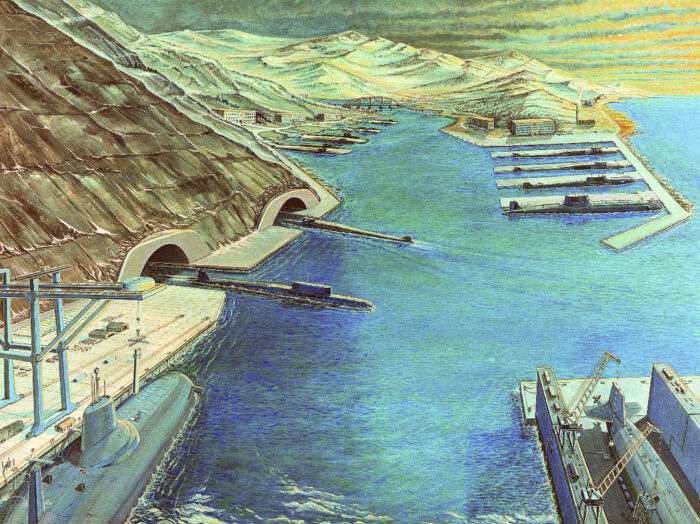
SOVIET BALLISTIC MISSILE SUBMARINE BASE The USSR’s strategic nuclear forces included a growing number of new TYPHOON-class and DELTA IV-class strategic ballistic missile submarines deployed in the 1980s. These advanced submarines, fitted with the latest generations of nuclear missiles, could operate from bases with tunnels for protection.
The creation of the Akula series was first widely reported by premier Leonid Brezhnev at the 26th Congress of the CPSU, stating:
The Americans have created a new submarine, the Ohio, with Trident I missiles. We also have a similar system, the Typhoon.
Brezhnev specifically called these the “Akula” as part disinformation. Reloading missiles and torpedoes at sea was not to be easier, and for this was developoed a dicated “sub tender”, Project 11570 diesel-electric missile carrier Alexander Brykin, displacing 16,000 tons and built in 1986, equipped with heavy cranes and storage facility to carry and install 16 SLBMs. This enabled the possibility of supplying the submarines from any point of the large northern coastline, provided it was preceded by an icebreaker.
In 1987, TK-12 Simbirsk made a first crew swap while in the Arctic, then several, keeping the same position. This enabled a more realistic 120 men rotation.
On September 27, 1991, while in training for launch in the White Sea by TK-17 Arkhangelsk, the training missile exploded and burned in the silo. The explosion tore off the silo cover, and the warhead was thrown into the sea. None were injured and TK-17 had to get back home for repairs. In 1997, the Northern Fleet conducted tests a,d TK-20 launched a full salvo of twenty R-39 missiles under Captain 1st Rank A. S. Bogachev. This was the first ans last time.
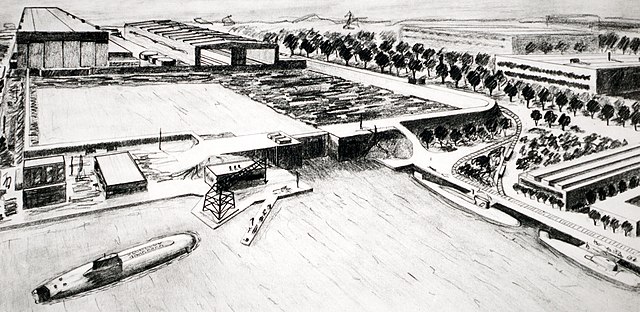
Severodvinsk base as per a Soviet observer
NATO’s take on this new type was mixed. The massive hull was unlike anything else built at the time, and notably completely different from what was expected, another Delta class. Such breath was very unusualand could cause a lot of issues, and several early hypothesis were expressed notably on the size of the missile silos hatches, which seemed unusually large but at least confirmed her status as SSBN. Such side could have been instead used to manage a hangar for aircraft or helicopters, something theorized on paprt multiple timles including in the US with some projects gaining traction, but never enough to be authorized. It was simply believed these subs had such a size which enabled longer range and more autonomy at sea (which was correct) while the larger silos were the precursor of a new type of giant ballistic missile dotted with more MIRV than previous attempts, always a limitation of Soviet SLBMs until then.
Design of the class

The detailed design called for basically a catamaran, five cylinders wrapped in the outer hull including the two main pressure hulls, running all along, forward cylinder containing the torpedo tubes and tactical missiles as well as a bow sonar sphere, and another cylinder containing the command and control center under the sail, equally massive, and the aft cylinder containing the aft steering systems. The “catamaran” was made of two main hulls comprising each a 190 MW reactor and 50,000 shp turbine plus a 800kW diesel generator as backup. This arrangement came from the impossibility for the Soviet industry to manage a single cylindrical hull strong enough to resist pressure or large enough to house the new ballistic missiles with two rows side-by-side. This created a unique appearance with a Flat decking abeam the sail with the two crew escape modules inside. The contemporary Oscar class SSGN were designed along the same principle. This gave them a bulky appearance without equivalent. The main problem with that configuration was agility, which was much more poorer than any contemporeary SSBN. But their goal was basically to be an underwater ballistic missile base and they only needed mobility to get to their hiding spot under ice.
Hull and general design
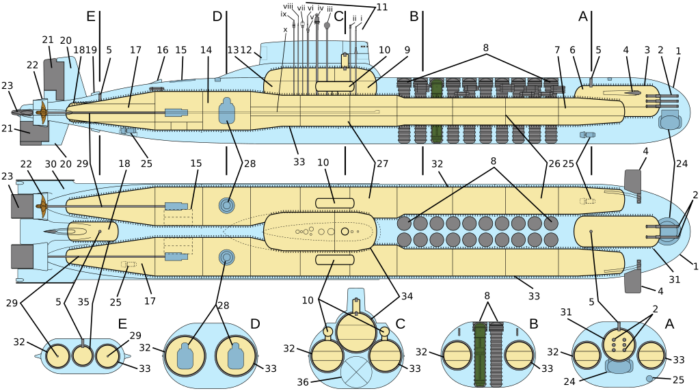
General layout of the internal structure of the Project 941 TRPKSN:
1 — light hull
2 — 533-mm bow torpedo tubes
3 — pressure hull
4 — bow retractable horizontal rudders
5 — submarine emergency escape hatches
6 — torpedo compartment
7 — hydroacoustic compartment
8 — R-39 ballistic missile silos
9 — central post
10 — rescue pop-up chambers
11 — retractable devices
12 — enclosure for retractable devices
13 — electronic weapons compartment
14 — reactor compartment
15 — hatches of pop-up communication antennas
16 — wing protecting the propeller-rudder group from ice
17 — turbine compartment
18 — aft airlock
19 — hydrodynamic guides
20 — vertical stern empennage
21 — vertical rudders
22 — propeller in annular nozzle
23 — stern horizontal rudders
24 — sonar antenna
25 — retractable thrusters
26 — missile compartments
27 — survivability compartments
28 — nuclear reactor
29 — main propeller shaft line
30 — horizontal stern empennage
31 — bow pressure module
32 — main pressure hull (right)
33 — main pressure hull (left)
34 — central pressure module
35 — stern pressure module
36 — fast diving tank
i — commander’s periscope; ii — universal periscope; iii — radio sextant; iv — radar complex; v — missile and control system; vi, viii — radio antennas of communication systems; vii — radio direction finder; ix — antenna of the space navigation system; x — gas pressure vessel.
The design core is made of these five habitable pressure hulls inside the light hull which wrapped them up all, giving the impression of a wide, flattened hull. Two are main ones with living quarters and operative rooms, with a maximum diameter of 10 m (32 ft) located parallel to each other making a catamaran hull. They were connected together, offering a unique capability of sealing and evacuating one to take refuge in the other if it was breeched. Forward and between the main pressure hulls were located the missile silos, due to the location of the powerplant aft, which gave these a unique look with the conning tower pushed towards the end of the hull.
This arrangement also enabled the tubes to be actually in a taller space and eliminated any “hump” to cover these, they were flush with the outer hull, improving hydrodynamic qualities of the hull.
In addition, there are three separate sealed compartments, with communication tubes working with pressure locks: These were the torpedo compartment, control module compartment (with central post) and stern mechanical compartment. They were all in the central part of the catamaran, and these separations complicated communication but improved immensely fire safety and survivability.
According to general designer S. N. Kovalev what happened on the Kursk (Project 949A) could never happened on a Project 941. For example the torpedo compartment is designed as a completely separate module and the voids around it were buffered by seawater. An internal explosion would have only affected the local area. At the contrary, in an OSCAR it was connected to the rest of the main presure hull. Both main pressure hulls were connected by three passages through intermediate pressure capsule compartments atthe bow, center and stern and themselves divided into further bulkheads making for a total of nineteen watertight compartments. Two pop-up rescue chambers were designed for the entire crew at the base of the CT, under the retractable masts wells.
The pressure hulls are made of titanium alloys. The outer hull is made of steel, covered with a non-resonant anti-radar/sound-insulating rubber coating weighting along 800 tons. According to USN experts, the pressure hulls are also equipped with sound-insulating coating. At the tail endk, unique for its two shafts was a single cross-shaped stern tail with horizontal rudders located directly behind the propellers. The front horizontal rudders are retractable.
The Typhoon was built and tailored to be able to deal with arctic conditions and the massive CT was made in very thick steel in order to break through ice up to 2.5 m (8.2 feet) thick, the maximum in winter. The ice undersea is covered with growths such as icicles or stalactites of significant size so when surfacing, the bow rudders were retracted, and instead of a rush, the nose just pressed against the ice ceiling with a specially adapted, reinforced bow as well as CT upper armour. After which the main ballast tanks are rapidly blown out, the pressure lifting up the ice until rupture. This avoid any collision with ice. The CT contains a sonar-like ice volumetric analyzer in order to detect the right spot for surfacing.
Powerplant

The main nuclear power plant is split betwen the two hulls, with two OK-650 water-cooled thermal reactors with a global capacity of 190 MW each. Their shaft capacity is equivalent to 50,000 hp each, 100,000 hp total, as much as a USN supercarrier. The engine compartments also comprised two steam turbine units, in each pressure hull, significantly increasing survivability as if one of these unit could be out of action, the other would take over. The powerplant is of course sound-insulated to an unpredecented levels, with two-cascade system, rubber-cord pneumatic shock absorption ensemble, and extensive rafting of all mechanisms and equipment almost completely negating vibrations.
The shafts ends with low-speed, low-noise, seven-bladed fixed-pitch propeller installed in ring fairings (fenestrons) for extra silencing.
If the reactors were to be shut down, the Typhoon cclass had a lot of redundancies, with two 190 kW DC electric motors. In port, they have a bow thruster with two telecopic rotors powered by 750 kW electric motors and propellers. These thrusters and present in the bow and stern.
The power plant are designed to be completely independent inside their pressure hulls and reactors are equipped with an automatic shutdown system in case of power supply loss, with extensive automatic systems for monitoring their condition. During the design, technical specifications included the need to ensure a safe radius around these for all leaks (after all, these subs were intended to stay underwater for a full year). For this purpose, methods for calculating the dynamic strength of the hull assemblies, the fastening of modules, and the floating chambers as well as intermediate containers and inter-hull connections were all tested in experimental pools.
Livability
The double hull, extra modules and about the same crew as a DELTA III ensured then crew is accommodated in conditions never seen befote, and probably also better than in any submarine in the West. The Typhoon was designed for a prolongated stay at the bottom of the arctic and thus, was made to endre this duration with a lounge, gym, swimming pool 4×2 m, 2 m deep with fresh or salt water, heating, solarium, even a sauna lined with oak boards and a “living corner” with playing tables and chairs. The walls were decorated with forests landscapes. Individual berthing was spacious, and the rank and file were accommodated in separate cabins, as well as the command staff in two and four-berth cabins with washbasins, televisions and air conditioning. There were two wardrooms, one for officers, the other for warrant officers and sailors. In fact after the first entered service, sailors rapidly call them “floating Hiltons”. To be assigned to those was a well look after promotion. Of course, the scenario of a post-apocalyptic stay fortunately never materialized, but this level of luxury was enjoyed all the same and is partly absent today in the much more cramped Borei class SSBNs, making these sailors nostalgic. Also, Air Regeneration and control of the environment onboard was very well done, and in 1984, for its participation to this, the Federal State Unitary Enterprise “Special Design and Technology Bureau for Electrochemistry with a Pilot Plant” was awarded the Order of the Red Banner of Labor.
Construction

Given their colossal dimensions, no facility exosted in teh Soviet Union -or in the world for that matter) to built the Typhoons. This, as they were ordered, a brand new workshop called No. 55 was specially built at Sevmash for their construction, with the largest indoor slipway in the world. The boats with all their internal spaces in the outer hull had a large buoyancy reserve of more than 40%. When submerged, exactly half of the displacement is ballast water, earning the nickname of “water carrier” in the navy. Rival Malakhit Design Bureau call them “the victory of technology over common sense”. One reason main reason for this decision was the requirement to ensure the smallest draft possible to be able to use existing piers and repair bases. Also, these large reserve of buoyancy coupled with a strong wheelhouse, had the sufficient power to break winter ice in the arctic, which no other subs could do, making them perfectly adapted to service in the North Pole.
Armament
R-39 Rif (NATO SS-N-20 Sturgeon)SLBM
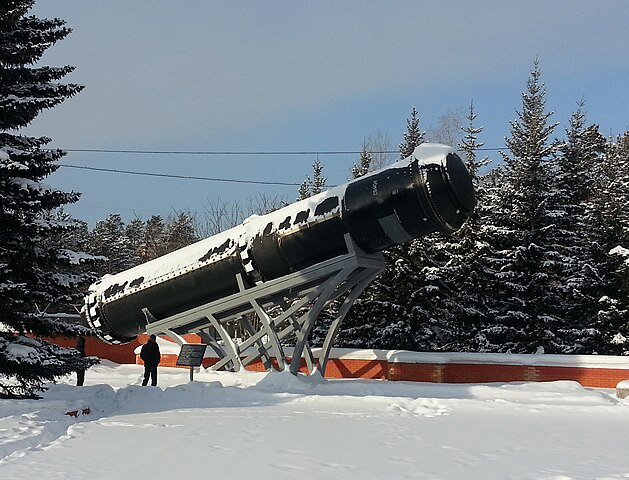
The main armament of the class is the D-19 missile system, with 20 three-stage solid-fuel ballistic missiles R-39. These missiles were the world’s heaviest at launch (together with the launch container: 90 tons) and the longest at 17.1 m. Combat range was an unprecedented 8,300 km, topped with 10 MIRV (warheads) 100 kilotons TNT each.
The R-39 had the GRAU index 3M65, SNV code RSM-52, NATO SS-N-20 Sturgeon was originally developed in the Machine-Building Design Bureau with its topic name being “Variant”.
It was a true family woth the R-29, R-29R, R-39, R-29RM, CSS-NX-3, and Tszyuylang-2, adopted for service in 1984 and only possible in size and weight because of the preculiar shape of the Typhoon class. This was also was the second Soviet solid-fuel submarine-based missile (after the R-31), first production model. Solid fuel was indeed far more secure. The first stages were manufactured at Yuzhmash (Dnepropetrovsk) and a total of 120 were deployed on the six 6 Typhoon class, 20 each, and subdivided into 200 MIRV, so 1200 total were manufactured at minima.
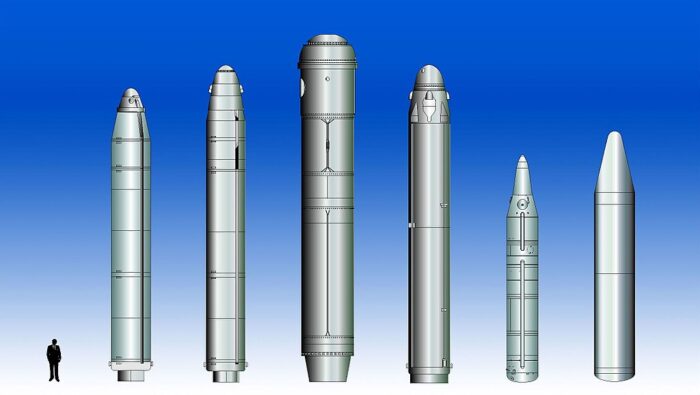
SLBMs comparisons. The R-39 is at the center
The D-19 was tested on the BS-153 diesel submarine Project 619 in Sevastopol, having a single silo for the R-39, making seven launches of mock-ups. The entire load of 20 missiles could be launched in one go, with a short interval between launches, underwater down to 55 m, without weather restrictions. The ARSS shock-absorbing missile launch system enabled a launch from a dry silo using a powder pressure accumulator reducing firing interval and pre-launch noise. The missiles were essnetially “suspended” right below the silo hatch. The initial plan was to have a 24-missile tranched (as featured in “red october” movie) but by decision of the C-in-C Admiral S. G. Gorshkov it was reduced to 20.
The R-39M “Grom” had increased accuracy, planned for the new SSBN of the Borei class. Another was tested but not adopted, R-39UTTH “Bark”. In 1999, decision was made to replace these by the new Bulava missile system. In 2004, only TK-17 “Arkhangelsk” and TK-20 “Severstal” still carried them and out of service by 2012.
Another specialized vessel built in 1983-1986 called Project 11570 sea weapons transport “Alexander Brykin” wa sused for reloading these subs at sea. It could carry 16 R-39 missiles. However in 1994 it was overhauled, but this was never completed ahd she was decommissioned in 2006, disposed of in Klaipeda, having no “second strike” purpose anymore.
⚙ D-19/RM-39 specifications |
|
| Weight | 84 tonnes (185,000 lb) |
| Dimensions | 16.1 metres (53 ft) or 8.4 metres (28 ft) without warhead x 2.4 metres (7.9 ft) |
| Propulsion | Three-stage Solid-fuel rocket |
| Range | 8,300 kilometres (5,200 mi) |
| Guidance | Astro-inertial |
| Ceiling | Sub-orbital |
| Accuracy | 500 metres (1,600 ft) CEP |
| Payload | 10 MIRV thermonuclear, 100–200 kt each (setup) |

Torpedoes
In addition to strategic weapons, the submarine is equipped with six 533 mm torpedo tubes designed to fire torpedoes and missile-torpedoes, as well as to lay minefields.
As for torpedoes, the same models as for the Delta III were used.
SET-65:
7.8 m, 1.740 kg, 205 kg PL, Contact fuse 10 m radius mag. prox. fuse Active/passive acoustic seeker 800 m, Wire, twin prop wakeless 40 kt 16 km 400 m sub.
SAET-60M:
7.8 m, 1.855 kg, 300 kg PL, same, no Wire guidance, 42 kt (13 km/42 kt, 15 km/35 kt)
53-65K:
7.8 m, 2.070 kg, 307 kg PL, Active acoustic wake homing, 2TF turbine engine 44 kts RA 19 km, 100 m depth.
53-65M:
7.95 m, 2.100 kgn 307 kg PL, Magn. prox. fuse, Active acoustic wake homing, 5DT-3 turbine 1.350 kW 44/70 knots, 14-24 km RA, 100 m depth.
URPK-6 Vodopad-PL SSM
The РПК-6 Водопад, “waterfall” is a 533 mm ASW missile deployed since 1981 (SS-N-16 “Stallion”) with a solid-fuel rocket engine, dual-role to carry a 400 mm anti-submarine torpedo or nuclear depth charge. It was used in the 83R, 84R variants and brought a considerable reach in defence to these SSBNs. They were the first so-fitted, cmbined SAMs and SSM/ASuM missiles. Note that most 553 mm torpedoes had alternative nuclear warheads. Development started in December 1969, lead developer was OKB Novator (OKB-8) but it was only Adopted by the Navy in 1981. Once ejected to the surface, the missile turns on its solid-fuel jet engine, left the water and flew to its designated target, then the rocket drops its warhead, landing by parachute, and the 400-mm UMGT-1 electric torpedo could home to range at 8 km, down to to 500 m at 41 knots. It could carry either a nuclear depth charge or 400 mm torpedo.
9K38 Igla SAM (SA-16 Gimlet)
Air defense is provided by eight Igla-1 MANPADS:
⚙ specifications 9K38 Igla SAM |
|
| Weight | 10.8 kg (24 lb) missdile alone, full 17.9 kg (39 lb) |
| Dimensions | 1.574 m (5.16 ft) x 72 mm |
| Propulsion | Solid fuel rocket motor |
| Speed | 570 m/s peak, about Mach 1.9 |
| Range | 5 km (3.1 mi) |
| Guidance | Dual waveband infra-red (S-version) |
| Ceiling | 3.5 km (11,000 ft) |
| Accuracy | |
| Payload | 1.17 kg (2.6 lb) with 390 g (14 oz) explosive, Contact and grazing fuze |
Sensors
Project Akula were equipped with the following electronic systems:
Omnibus combat information and control system and Skat-KS analog hydroacoustic system. It was planned to install Skat-2M on all ships during their modernization but only TK-17 and TK-20 receioved it, as well as the digital Skat-3 on TK-208 in mid-life overhaul.
The also had the MG-519 Arfa mine detection hydroacoustic station, MG-518 Sever echo sounder, radar MRKP-58 “Buran”, navigation complex “Simfoniya”, radio complex “Molniya-L1”, satellite communication system “Tsunami”, television complex MTK-100. In addition they had two pop-up buoy-type antennas for reception of radio messages, target designations and satellite navigation signals down to 150 m and under ice.
MRKP-59 Radian-U radar:
MGK-540 Skat-3 sonar suite:
MG-519 Arfa:
MG-512 Vint sonars:
MRP-21A ECM suite:
MG-74 Korund-2 decoys:
MVU-132 Omnibus CCS:
KT-711 differed by having the older MGK-500 Skat-KS sonar suite.
In 2002 TK-208 Dmitriy Donskoy was modified under Project 941UM and in addition to replacing two R-39 SLBM for R-30 Bulava SLBM (2 3M30)) and the removal of its MGK-500 Skat-KS sonar and Omnibus CCS replaced by the MGK-520M Skat-2M sonar and Omnibus-U CCS.

Author’s old vectorial profile

Mike1979Russia’s profile (Wikimedia CC)
⚙ specifications |
|
| Displacement | 23,200 t (22,830 long tons) surfaced, 48,000 t (47,240 long tons) submerged |
| Dimensions | 175 x 23 x 12m (574 ft 2 in x 75 ft 6 in x 39 ft 4 in) |
| Propulsion | 2× OK-650 PWR 190 MWt, 2x geared steam turbines 50,000 shp, 7-bladed shrouded props |
| Speed | 22.22 knots (41.15 km/h; 25.57 mph) surfaced, 27 knots (50 km/h; 31 mph) submerged |
| Range | 120+ days submerged |
| Armament | 6× 533 mm (21 in) TTs (22), 20× RSM-52 SLBMs, 9K38 Igla SAM |
| Max diving depth | 400 m (1,300 ft) tested, c600m max |
| Sensors | MRKP-58 Radian, MGK-500 Skat-KS sonar, MG-519 Arfa, MG-512 Vint sonar, see notes |
| Crew | 160 |
Career of the Typhoon class SSBNs
 ТК-208
ТК-208
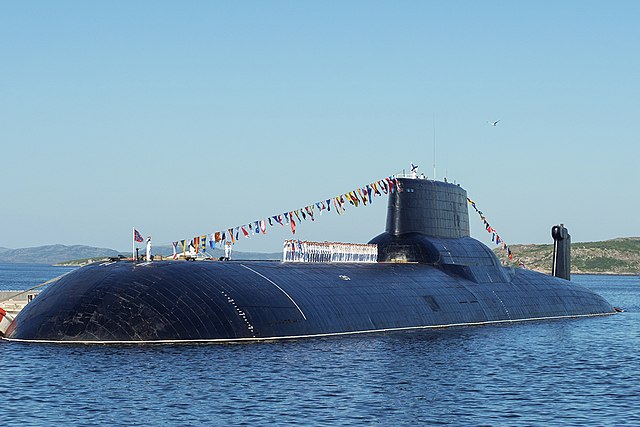
ТК-208, later Dmitriy Donskoy from October 2000 (ex-К-208) was laid down on at 711th Northern Yard in Severodvinsk on 30.6.1976, launched on 27.9.1980 and completed in 29.12.1981. In 1990, she entered the dry dock in Severodvinsk for upgrades, but the economical situation postponed its completion. In 2000, work resumed and by June 2002, she was recommissined in the Russian Navy as TK-208 Dmitry Donskoi. After 12 years… She had been re-equipped wit the Bulava, and overhauled under Project 941UM, lossing two R-39 SLBM tubes, her MGK-500 Skat-KS sonar and Omnibus CCS. In addition to two 2 R-30 Bulava SLBM (2 3M30) installed she received the MGK-520M Skat-2M sonar and the Omnibus-U CCS.
First launch of a Bulava was on 27 September 2005, surfaced from a point in the White Sea. On 21 December 2005, it was tested underwater for the first time, successfully hitting a target on the Kura Test Range (amchatka Peninsula).
In August 2009, Patriarch Kirill visited her and blessed the crew. On 9 December 2009, Dmitriy Donskoy launched a Bulava in operational conditions but the third stage failed, detonated. The glow was visible in nearby Norway. On 7 October 2010, she launched another Bulava from the White Sea, hitting as reported, the Kura Test Range. She was reported active as of 2020, upgraded to the RSM-56 Bulava but again, real status was unclear then.
In 2021 she was reported maintained until 2026 but transformed as a weapons test platform. She was scheduled for replacement azs SSBN by a Borei class. In 2021, the name was freed for a new Borei-class in construction.
On 20 July 2022, she was reported decommissioned. By December 2022, she was allegedly prepared for decommissioning with a technical staff on board, last reported activity were sea trials at Krasnoyarsk in September 2022. On 6 February 2023 she was reported decommissioned officially.
 ТК-202
ТК-202
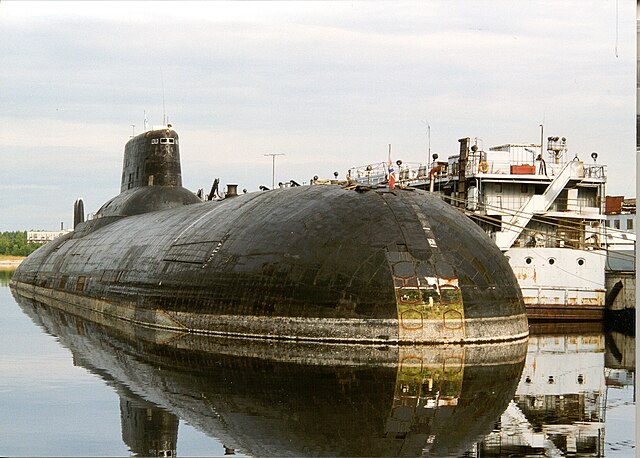
ТК-202 was laid down at Yard 712 of Northern Yd, Severodvinsk on 22.4.1978, launched 23.9.1982 and completed on 28.12.1983. In December 1983, she started commissioned service with the Soviet Northern Fleet, based in Nerpichya Bay, Zapadnaya Litsa. On 1983, September 25 the formation of the 589th technical crew was completed; it consisted in anti-missile defense, preventive maintenance, and on board repairs. She joined the 18th Submarine Division, 1st Submarine Fleet (Northern red banner fleet), certificate signed on December 28 by Dunayev S.E., Raikhlin A.Z. and State Acceptance Commission by Captain V.P. Rykov. On December 29 she moved to Nerpichya Bay in Zapadnaya Litsa while the 1st and 2nd crews arrived to visit her.
On the 31st, her flag is raised and until 1985 she made yearly patrols as part of the 589th Submarine unit alongside TK-208. Between February and May 1984 she trained a the 93rd Naval Training Center in Paldiski in Estonia. On May 13 she fireds her first missile with the 1st crew and on June, 29 underwent complex exercises. In October she is certified for the permanent readiness forces and made a first cruise with the 1st crew under captain 1st group Grigoriev V.K.), under ice for 5 days. In May 1985 May she started training with the 2nd crew under captain 1st group Shvechkov G.A.) with a cruise and under ice for 31 days and then a first missile launch.
By April 28 1986 she collides with a minesweeper, light damage. On August 14 she proceeds to a tranch launch, Rating – “excellent” with the 1st crew and same in 1987, rated “unsatisfactory”. She made another cruise with captain Grigoriev V.K., under ice for 74 days.
In 1988, the 589th unit with TK-202 is joined by TK-17 and the same year she performed a double cruise (two crews) under Richard V.N., under ice for 18 days and in May, 20 she is placed in reserve in connection for her first overhaul starting in June ay Severodvinsk, temporarily subordinated to the 339th Separate Squadron, completed by December 29 1989.
On January 27 1990 she is back to her unit, and in the summer performs a cruise with the 1st crew under captain 1st group Pavlenko S.V., under ice for 32 days.
On Feb. 4 1991 F she is placed in 2nd category reserve for repairs and maintenance at Severodvinsk of her high-pressure air systems, completed on September 2, sails to to Nerpichya Bay. On 10 Sept. 1991 she is sent to the 1st category reserve and on December the 2nd crew is disbanded (directive of the General Staff, 31.01.1991) as well as her unit, the 589th TEPL. By June 3, 1992 she is assigned to a subclass unit with her 1st crew of TK-17 on board under Captain Grishkov I.E. for deactivation.
On July 19, her reactors are shut down and by March 28 1995 she is decommissioned, laid up in Nerpichya Bay for a new planned overhaul.
In 1996 due to lack of funding, she is writen off and sold for scrap. In October dismantling commenced alongside B-534 Project 945A and by late 1997 her SLBM with expired storage life are disposed of by launch. She is stricken formally in 1999 and by August 2, towed to Severodvinsk and “PO Sevmash” for disposal, following the new procedure of Russo-American program “Cooperative Threat Reduction”. The crew is dismissed and sent to Nerpichya Bay and by 2000 September, disbanded.
In 2003 her Nuclear fuel is unloaded and in 2005 her reactor compartments disassembled. By 2007, August, her reactor block is transferred to SRZ-10 Polyarny for temporary storage afloat. In 2014 her six-compartment reactor unit is transferred to Nerpa shipyard, JSC Zvezdochka Ship Repair Center in Snezhnogorsk for temporary storage and by July 2016 they are sent to Sayda Bay for long term conservation work until October, inspected and prepared for long-term storage.
 ТК-12
ТК-12
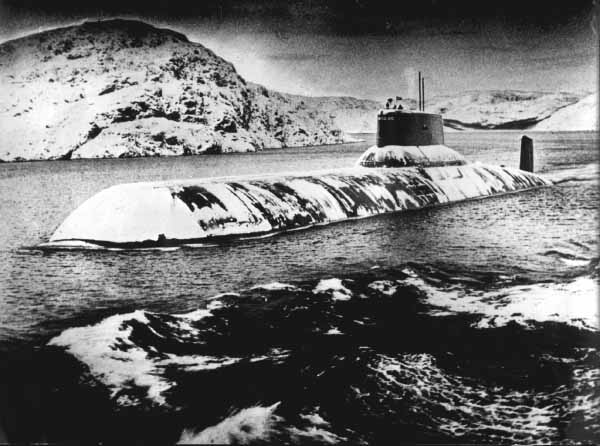
ТК-12 was laid down at yard 713, Northern Yd, Severodvinsk on 19.4.1980, launched on 17.12.1983 and completed on 26.12.1984. Her records are about the same as above. In 1983-1985 her 2nd crew trains at the 93rd Naval Training Center in Paldiski, Estonia and from May 1984 to Feb. 1985 she the 605th Submarine unit is sent for training at the 93rd Naval Training Center in Paldiski as well. Sea trials are made in 1984, 22-25 August. Certificate signed on 26 December by Grechkov Yu.N., Bykovsky V.M. (100th submarine built there). Flag raised on December 27, sent to Nerpichya Bay and By Jan. 1985 January 15, joins the Red Banner Northern Fleet, 18th sqn. 1st Div. Shakedown in 1985, 4-10 September in the White Sea with 1st crew under Captain Bliznyuk A.S. and senior – fleet Capt. V.A. Chernov E.D. From 21 September to 9 October she made a polar sortie (45 miles to the Pole) and first patrol on October 13-24 with missile firing then anotehr on November 14-17, with two missile launches. By 1985 December-1986 June she made a White Sea 180 days cruiser under Repina Yu.M. (1st crew) and Leontyev M.A. (2nd crew) assisted by the icebreakers Sibir and Peresvet.
By 1986 August 1-18 she completes an extended acoustic testing program and performs several sorties with missile launches.
From December 1986 to January 1, 1987 she sortied with the2nd crew on board under 2nd lieutenant Leontyev M.A. when she collides by HMS Splendid (S112) shadowing her. The latter had her antenna torn off. On the Russian side, she had her right bow rudder hitting the bottom, denting of the rudder blade over 30 cm in length and return to base to assess damage and continue preparations for her sortie, from January to April 1987 with the 2nd crew over 108 days 66 under ice).
In August-September she patrolled the North Pole with the 1st crew under Repin Yu.M. and Olkhovikov A.V. and passed the geographic point, making a missile launch as part of 24 days under ice.
The campaign was done with K-51 and K-358.
In 1987 she mad anotehr sorrtie with the 1st crew, 45 days under ice, being awarded the title “Excellent ship”.
In 1988 she completes all state acoustic tests and from April 26 to July 12 whe made a cruise with the 2nd crew (Leontyev M. A.), 64 days under ice, then 1st crew, awarded the “Excellent ship”, 1st place in the formation, and Ministry’s pennant “For courage and military valor. While at Severomorsk she taks part of the “Kumzha” exercise with life fire of torpedoes on 15.02. 1989 and missile on 21.02. 1989. On 27 January 1990 she is sent to the 1st category reserve for upcoming overhaul at Severodvinsk, core refueling, completed by Nov. 1991.
She made four cruises in 1992 but on 1993 the 605th unit only consistes of TK-12 and TK-202. It is disbanded on September 1993, 2nd crew in 1994, reserve 1st cat. in 1996, laid up in Nerpichya Bay and on 1997 September-October disposed off her missiles by launch. In 2000 she is no longer listed. Her crew suggest the name Simbirsk in 2001 but this is rejected by Admiral N.G. Kuznetsov and in 2002 July 2 she had a small guard crew, in 2005 she is sent to Sevmash for disposal (Joint Threat Reduction program) performed by a civilian crew and specialists at Zvezdochka, main crew disbanded, spent nuclear fuel unloaded, final dismantling in 2006 and reactor comp. BU until 2007, sent to Polyarny, final stage of storage and complete dismantling in October 2018.
 ТК-13
ТК-13
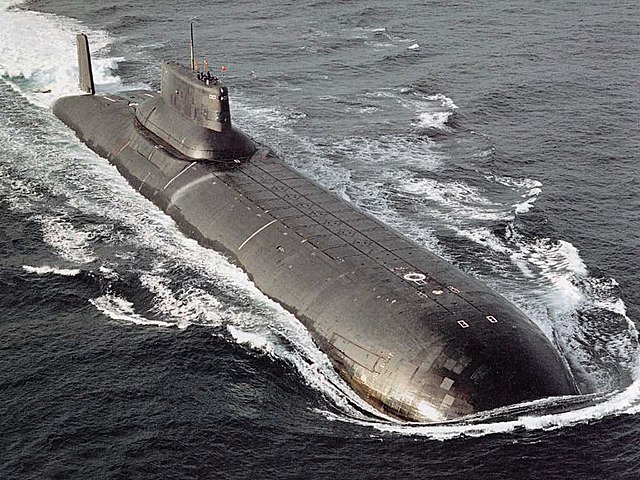
ТК-13 was laid down at yard 724, Northern Yd, Severodvinsk laid down 23.2.1982 and launched 30.4.1985 and completed on 26.12.1985. Both crews trained at the 93rd Naval Training Center in Paldiski, Estonia and moved to Nerpichya Bay in Zapadnaya Litsa as the boat was launched. The 1st crew was subordinated to the 339th Separate Squadron. After the acceptance certificate was signed K-13 arrived at Nerpichya Bay, flag raised on December 30, not 06 as seen in some sources. Served with the Red Banner Northern Fleet, 18th Submarine Division, 1st Submarine Fleet and from sept. 2002 from the 12th. In 1987 the 2nd crew under captain 1st rank Kolotyuk Yu.P. was awarded the grade -excellent” for under ice cruise drills and missile firing.
On October she was visited by the General Secretary of the Central Committee M.S. Gorbachev when visiting Murmansk and Severomorsk;.
In April 1988 she participated in the “Kumzha” event in Severomorsk. In May 1988 with the 2nd crew (1st lieutenant Kolotyuk Yu.P.) she made an experimental exercise, with a nuclear missile strike by a single combat shift and with limited backup. In Auugst 1989 under Kolotyuk Yu.P. she was a special exercise of retaliatory missile-nuclear strike from an anchored position of two R-39 SLBMs.
In Oct. 1989 commander Efimenko won the Navy Commander-in-Chief’s Prize for missile training. In 1990 she made her longer mission, under ice for 68 days.
In July-August she was drydocked for maintenance. In the summer of 1991 the combat patrol schedule is cut short due to her faulty main propulsion plant.
In Bov. 1991 she took part in Northern Fleet command and staff exercises for the CiC. She had a major overhaul in 1993-1994 by the 606th technical crew. In 1995 she carried out missile firing (launched three) but on 12 Feb. 1996 reported a failure of a diesel M-580. On 27 March 1997 sh fired for the first time a full set of SLBM under the disposal program by air detonation. One fails.
In 1997 the 2nd crew is disbanded ans she is withdrawn from the feet and sent to the reserve, laid up in Nerpichya Bay, Zaozersk in 1998.
In 2000 her nuclear power plant is extracted and made safe. In 2006 she is prepared for disposal, which started in 2007 at Zvezdochk, 1st crew disbanded, drydocked in 2008 at the Zvezdochka Defense Ship Repair Center in Severodvinsk in a joint financing by USA and Canada, the “Global Partnership” adopted at the 2002 G8 summit as part of a bbilateral “Cooperative Threat Reduction” program. This is over by 2019, the sub is in long-term storage at the Sayda.
 ТК-17
ТК-17
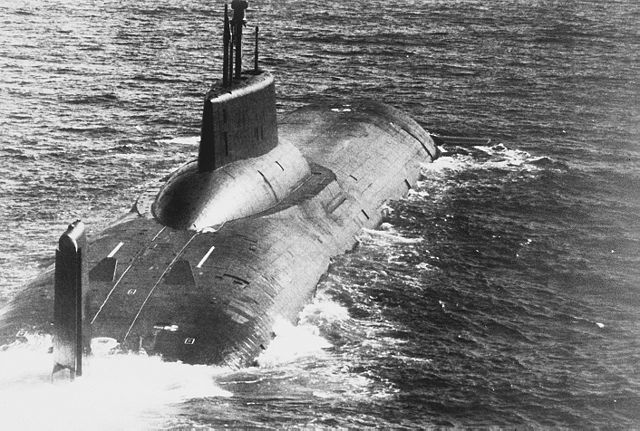
ТК-17 was renamed in November 2002 Arkhangelsk. She had been laid down at yard 725, Northern Yd, Severodvinsk on 9.8.1983, launched on 12.12.1986 and completed on 15.12.1987. Her career is about the same as her other sisters. Here are some highlights: She served wit the Red Banner Northern Fleet, 18th Submarine Division, 1st Submarine Fleet based in Nerpichya Bay, Zapadnaya Litsa starting opoerations in June 28, 1988. In July-September she mad her first qualif. sortie with the second crew (commander Lobastov) with extended acoustic tests and from November 15 to February 14 1989 with the first crew (commanderKorbut N.V. senior captain Shvechkov G.A.) she made a patrol in the Barents and Kara Seas under ice for 64 days.
On August-November 1990 under the second crew (captain Domnin V.I.) she had SLBM missile firing rating “excellent”, Awarded the Challenge Red Banner, Murmansk Regional Committe.
On September 27, 1991 during a missile firing in the White Sea, a practice missile exploded and burned in the silo. First crew under Captain Grishkov senior observer and captain Ivanov V.V.. The detonation tore off the silo cover, warhead thrown into the sea. No injuries. She returned to Severodvinsk for emergency repairs having a dud well installed in the missile silo No. 3, disconnected from all systems, welded shut. On 27.11.1993, she had an issue with the main power plant, solved during the mission.
In 2001, June 17 under Cdr Bogachev A.S. she departed for Severodvinsk for a major overhaul, and in 2002, November 18 was renamed “Arkhangelsk”, followed by work at Sevmash and a combat training launch of a ballistic missile at the Kura test site, Kamchatka. She took part in the naval parade of Navy Day at the roadstead of Severomorsk. In 2004 15-16 February she sortied with the Supreme Commander-in-Chief of the Armed Forces of the Russian Federation President Putin and his staff. In 2005, January 26 she is withdrawn to the 1st category reserve and in 2007 August CiC Admiral of the Fleet Vladimir Masorin reports that her modernization to the Bulava-M missile system is not planned until 2015.
In 2009 April she is visited by Sergey Stepashin which supports the decision to modernize Arkhangelsk and Severstal and in 2009 July she is transferred from Nerpichya Bay to Severodvinsk, 339th Separate Squadron and in 2011 September Russian media outlets reports she would be decommissioned due to restrictions of START-3 international treaty. The R-39 missile is now remove from service and production long stopped so there are no alternative back then. By September 2012 the US Embassy in Moscow publishes a statement that seventy eight R-39 units (designated RSM-52) were dismantled. Thius without the Bulava upgrade, both Typhoon were confirmed to be decommissioned in May 2013, to be dispose off based on financial considerations. She is stricken on 2015, March 19, moored in Severodvinsk awaiting disposal schedule, , which was stull pending by January 2020.
 ТК-20
ТК-20

ТК-20 was renamed in June 2000 Severstal’. She was laid down on yard 727, Northern Yd, Severodvinsk on 27.8.1985, launched on 11.4.1989 and completed on 19.12.1989. On April 11 1989 while she is launched the 1st crew is temporarily subordinated to the 339th unit, learnig the basics of the submarines and she is commissioned on 19 December, certificate signed by Dunayev S.E. on the 22th. Maintenance is assigned to the 508th unit and technical crew. On 28 February the next year she joined the Red Banner Northern Fleet in the 18th Submarine Division, 1st Sub Fleet Submarines and from 2002 the 12th division, based in Nerpichya Bay. In June the 1st crew starts training under captain Abramov I.V. alongside K-138, in exercises and qualifications.
The 2nd crew is disbanded and from November 1990 to February 1991 she completed qualif. under captain 1st group Tisetsky A.S. and senior captain Britshev, then in the spring 1991 under Abramov I.V., and senior captain Plotnikov, under the ice for 7 days. In 1991 October- January 92 she is under ice for 43 days and conduct yearly cruises in 1993 and 1994.
From Oct. 1994 to April 1995 she sailed to Severdvinsk for overhaul maintenance, under the 339th Separate Squadron and from 2 August to 8 November 1995 made a major operational cruise under Captain Bogachev A.S., and senior captain Makeev V.M., surfacing in the North Pole on 20.08.1995 under strong current, chasig after a deriving ice hole for three and a half hour. At 40 meters deep a strong current sent her across the hole when she surfaced, entire stern under ice, breaking in half, causing a large dent on her starboard side outer hull. She fires an RSM-52 missile on the two planned on the 25th in support to B-414. At their return they received state awards, Rear Admiral Makeyev being awarded the title Hero of Russia.
In November 1996 she completes her longer long-distance voyage yet with captain 2nd rank Yakimov and senior captain Domnin) to the polar region, with training launch.
In March 26-27, 1997 missile firing with full set is done under captain 1st rank Bogachev A.S. under the disposal program. One missile failed but 19 are disposed of.
In Stpy.-Oct. 1997 other SLBMs with expired shelf life are loaded for disposal by launch. On 1997 December 3-4 she made a full missile launch under the disposal program, all 20 R-39 in record time taking the first place in the Northern Fleet in missile training. On March, 3 her technical crew is disbanded but she participates in the parade in Severomorsk. By late 1999 November-December she made a new cruise under captain Shnyak S.A., and senior captain Fedorin V.M. in the Arctic region and in 2000, May 31 agreeùent is signed for disposal at Severstal and the Cherepovets Metallurgical Plant. In June 20 she is renamed Severstal and undergoes maintenance in 2001. In September she was on patrol on the area of sinking of “Kursk”. In October 17 she made launched at the White Sea test site, being awared the “best submarine of the Northern Fleet”. Until 2002 she is under maintenance at “PO Sevmash” but in 2004 April 29 she is transferred to the 1st category reserve, having no SLBM to carry. In 2005 she is transferred to the 339th submarine brigade, a crew reformed as the 2nd crew for maintenance and in August 2007 CiC Vladimir Masorin reports a planned modernization for the Bulava-M but she is in reserve. This is confirmed in 2009 by Sergey Stepashin, limited to Arkhangelsk and Severstal but 2011 it is announced she will be decommissioned. This is confirmed in 2013 and 2015, disposal to be commenced by February 2016 at a cost of 177.5 million rubles, completion date October 2017. Supposed to be complete. Updates to come.
 TK-210
TK-210
ТК-210 was laid down at yard 728, Northern Yd, Severodvinsk in 1986 but cancelled in 1990 while 60% complete.
Read More/Src

Links
https://www.fontanka.ru/2009/08/22/025/
https://www.forbes.com/sites/hisutton/2020/08/23/last-typhoon-can-the-worlds-largest-submarine-still-destroy-the-world/?sh=187bc6906ec2
https://tass.com/defense/1244995
http://www.deepstorm.ru/DeepStorm.files/45-92/nbrs/941/list.htm
https://www.thebarentsobserver.com/security/sevmash-yard-begins-construction-of-two-more-ballistic-missile-subs/164440
https://ria.ru/20220720/apl-1803603901.html
https://www.navyrecognition.com/index.php/naval-news/naval-news-archive/2022/july/11988-russian-nuclear-submarine-dmitry-donskoy-returns-to-its-naval-base.html
https://tass.ru/armiya-i-opk/16557597
http://www.star.ru/data/files/trud_vakhta/tv10_04_01.pdf
http://www.deepstorm.ru/DeepStorm.files/45-92/nbrs/941/tk-12/TK-12.htm
https://tass.com/defense/1571657
on ru.wikipedia.org/
on en.wikipedia.org
on nationalinterest.org/
on navypedia.org/
on commons.wikimedia.org/
deepstorm.ru DeepStorm.files
Videos
Model Kits
on scalemates.com
on sdmodelmakers.com/

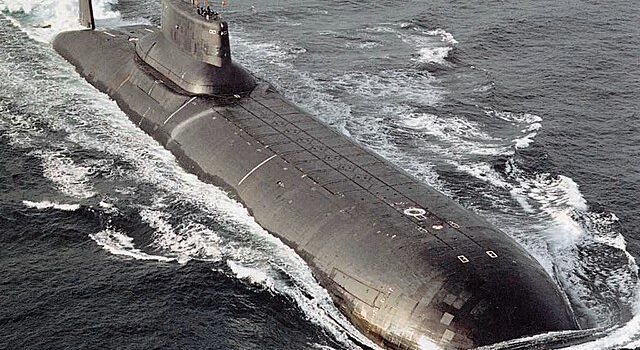
 Latest Facebook Entry -
Latest Facebook Entry -  X(Tweeter) Naval Encyclopedia's deck archive
X(Tweeter) Naval Encyclopedia's deck archive Instagram (@navalencyc)
Instagram (@navalencyc)





 French Navy
French Navy Royal Navy
Royal Navy Russian Navy
Russian Navy Armada Espanola
Armada Espanola Austrian Navy
Austrian Navy K.u.K. Kriegsmarine
K.u.K. Kriegsmarine Dansk Marine
Dansk Marine Nautiko Hellenon
Nautiko Hellenon Koninklije Marine 1870
Koninklije Marine 1870 Marinha do Brasil
Marinha do Brasil Osmanlı Donanması
Osmanlı Donanması Marina Do Peru
Marina Do Peru Marinha do Portugal
Marinha do Portugal Regia Marina 1870
Regia Marina 1870 Nihhon Kaigun 1870
Nihhon Kaigun 1870 Preußische Marine 1870
Preußische Marine 1870 Russkiy Flot 1870
Russkiy Flot 1870 Svenska marinen
Svenska marinen Søværnet
Søværnet Union Navy
Union Navy Confederate Navy
Confederate Navy Armada de Argentina
Armada de Argentina Imperial Chinese Navy
Imperial Chinese Navy Marinha do Portugal
Marinha do Portugal Mexico
Mexico Kaiserliche Marine
Kaiserliche Marine 1898 US Navy
1898 US Navy Sovietskiy Flot
Sovietskiy Flot Royal Canadian Navy
Royal Canadian Navy Royal Australian Navy
Royal Australian Navy RNZN Fleet
RNZN Fleet Chinese Navy 1937
Chinese Navy 1937 Kriegsmarine
Kriegsmarine Chilean Navy
Chilean Navy Danish Navy
Danish Navy Finnish Navy
Finnish Navy Hellenic Navy
Hellenic Navy Polish Navy
Polish Navy Romanian Navy
Romanian Navy Turkish Navy
Turkish Navy Royal Yugoslav Navy
Royal Yugoslav Navy Royal Thai Navy
Royal Thai Navy Minor Navies
Minor Navies Albania
Albania Austria
Austria Belgium
Belgium Columbia
Columbia Costa Rica
Costa Rica Cuba
Cuba Czechoslovakia
Czechoslovakia Dominican Republic
Dominican Republic Haiti
Haiti Hungary
Hungary Honduras
Honduras Estonia
Estonia Iceland
Iceland Eire
Eire Equador
Equador Iran
Iran Iraq
Iraq Latvia
Latvia Liberia
Liberia Lithuania
Lithuania Mandchukuo
Mandchukuo Morocco
Morocco Nicaragua
Nicaragua Persia
Persia San Salvador
San Salvador Sarawak
Sarawak Uruguay
Uruguay Venezuela
Venezuela Zanzibar
Zanzibar Warsaw Pact Navies
Warsaw Pact Navies Bulgaria
Bulgaria Hungary
Hungary

 Bundesmarine
Bundesmarine Dutch Navy
Dutch Navy Hellenic Navy
Hellenic Navy Marina Militare
Marina Militare Yugoslav Navy
Yugoslav Navy Chinese Navy
Chinese Navy Indian Navy
Indian Navy Indonesian Navy
Indonesian Navy JMSDF
JMSDF North Korean Navy
North Korean Navy Pakistani Navy
Pakistani Navy Philippines Navy
Philippines Navy ROKN
ROKN Rep. of Singapore Navy
Rep. of Singapore Navy Taiwanese Navy
Taiwanese Navy IDF Navy
IDF Navy Saudi Navy
Saudi Navy Royal New Zealand Navy
Royal New Zealand Navy Egyptian Navy
Egyptian Navy South African Navy
South African Navy






























 Ukrainian Navy
Ukrainian Navy dbodesign
dbodesign